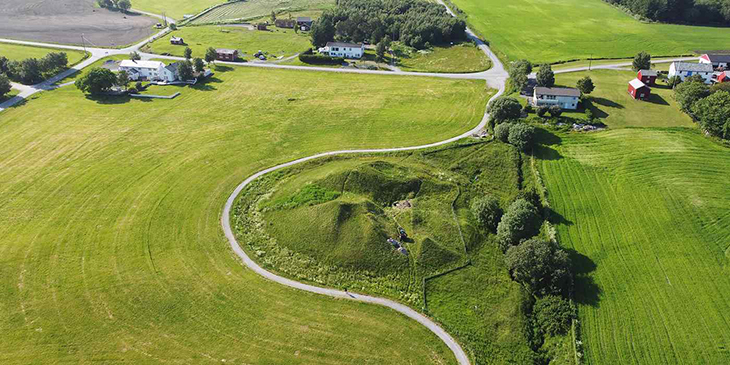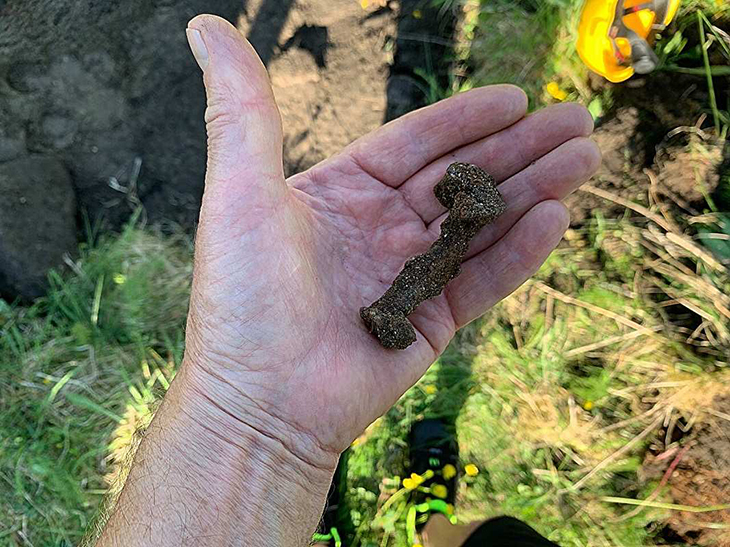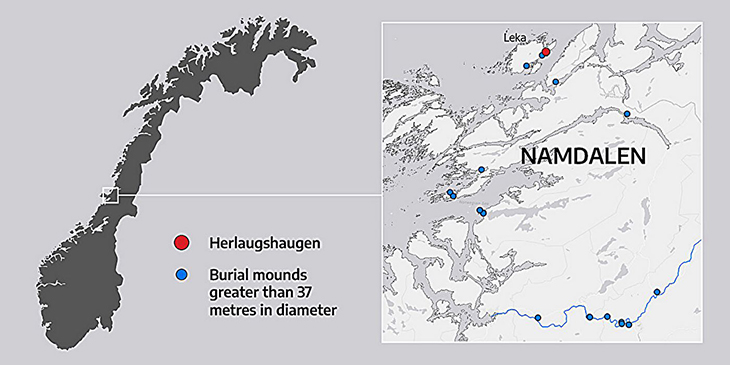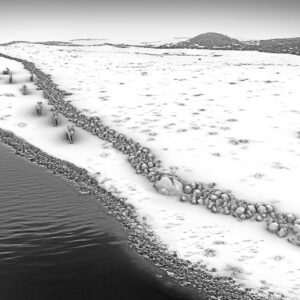
The recent discovery by county archaeologists of a Viking ship burial on the remote island of Leka has unveiled an interesting piece of Scandinavian history. This burial site has been identified as the oldest of its kind in all of Scandinavia, raising intriguing questions about the origins of Viking culture.
Dating back to a period preceding the traditional Viking Age, the burial on Leka challenges conventional notions of Viking ship burials. The term “Viking” typically refers to Scandinavian mariners who engaged in trading and raiding activities during the Viking Age. However, the funerary activities associated with the Leka burial predate this era.
Situated within the archaeologically rich region of Namdalen, the Herlaugshaugen burial mound stands as a testament to the ancient heritage of Scandinavia. While Namdalen boasts a high concentration of burial mounds, many remain unexplored. Herlaugshaugen, in contrast, has undergone excavation on three separate occasions.
Historical records from the 18th and 19th centuries provide insights into the contents of the mound, including construction materials, a bronze cauldron, animal bones, and the remains of a seated skeleton with a sword. Despite the disappearance of these artifacts over time, Herlaugshaugen remained a subject of interest for Norway’s past inhabitants.
In a collaborative effort involving archeologists, a professional metal detectorist, and organizations such as the Norwegian Directorate for Cultural Heritage and Trøndelag County Authority, the mound was subjected to further investigation.
The discovery of iron nails and other evidence strongly suggests that the site once hosted a ship burial dating back to around 700 CE, predating the recognized onset of the Viking Age.

Geir Grønnesby, an archaeologist at the NTNU University Museum, told Phys.org. ,“This dating is really exciting because it pushes the whole tradition of ship burials quite far back in time.”
Of particular significance is the size of the ship found at the burial site, indicating advanced boat-building techniques and maritime capabilities well before the advent of the Viking Age.
While Viking raids are conventionally dated to the late 8th century, the presence of this early ship burial suggests that elements of Viking culture, such as seafaring and trade, were already established centuries earlier.
Archaeologist Lars Forseth from Trøndelag County Authority said, “I think that the location along the shipping route plays a key role in understanding why Herlaugshaugen burial mound is located at Leka. We know that whetstones have been traded from Trøndelag to the continent from the mid-700s onwards, and goods transport along the route is key to understanding the Viking Age and developments in ship design before the Viking Age.”

The discovery of the ship burial sheds light on the socioeconomic dynamics of ancient Norwegian society. Owning a ship conferred significant status and economic opportunities, facilitating trade connections between Scandinavia and the wider world.
The concentration of burial mounds in Namdalen hints at the presence of an elite merchant class that thrived in this region.
Despite Namdalen’s status as home to 10% of Norway’s recorded burial mounts, much of the area remains unexplored. The discovery of the Leka ship burial highlights the potential for further revelations about Norway’s ancient past, offering tantalizing glimpses into the rich history of Scandinavian civilization.
What are your thoughts? Please comment below and share this news!
True Activist / Report a typo


